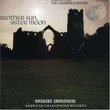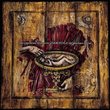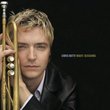| All Artists: Felix [1] Mendelssohn, Peter Maag, Orquesta Sinfónica de Madrid Title: Mendelssohn: Symphony No. 5 "Reformation"; Symphony No. 1 Members Wishing: 0 Total Copies: 0 Label: Arts Music Release Date: 9/30/2003 Genre: Classical Style: Symphonies Number of Discs: 1 SwapaCD Credits: 1 UPC: 600554750828 |
Search - Felix [1] Mendelssohn, Peter Maag, Orquesta Sinfónica de Madrid :: Mendelssohn: Symphony No. 5 "Reformation"; Symphony No. 1
 | Felix [1] Mendelssohn, Peter Maag, Orquesta Sinfónica de Madrid Mendelssohn: Symphony No. 5 "Reformation"; Symphony No. 1 Genre: Classical |
Larger Image |
CD DetailsSimilarly Requested CDs
|
CD ReviewsBest recordings of two early works Andrew R. Weiss | Raleigh, NC USA | 01/28/2009 (5 out of 5 stars) "Despite the numbering, Mendelssohn's 5th symphony is really his second, composed when he was 20 and only 4 years after the first and a full 5-10 years earlier than the 3rd and 4th. Mendelssohn delayed publication of both the 1st and 5th, not wanting "such an early, youthful work ... [to] escape the prison of its music cabinet." Both are self-consciously serious, the first especially. It was Mendelssohn's first symphony for a full orchestra (he had already composed 12 for strings only) and betrays his influences (Mozart, Beethoven, Haydn and Weber) more than his own distinct personality. It's interesting to listen to, but not a piece I'm likely to return to again and again.
The "Reformation" has a bit more substance and personality. Incorporating the "Dresden Amen" in the first movement and the Lutheran chorale "A Mighty Fortress" in the last, it has a strongly religious bent but still sports a joyful scherzo somewhat reminiscent of Schumann. It is a sincere and well-intentioned piece and Maag digs into it with dedication and warmth, showing us that the human being behind the music had more going on in him than glossy surfaces. The more-obviously spiritual outer movements have a cathedral-like quality and the scherzo is robust and joyous. All in all, it's worth the listen and stands up to rehearing. Throughout, Maag's deep affinity to Mendelssohn yields sincere, well thought-out and heartfelt performances. Like Maag's other late-period recordings, it shows signs of being extremely well-rehearsed in its meticulous phrasing and dynamics, and the Madrid Symphony plays its heart out. Maag may not convince you that the 1st is a great piece of music, but you will probably find it entertaining, and he may well convince you that the 5th is better than you thought it was (he certainly did that for me). Arts' recording continues to confound me, sounding open, warm and dynamic on high-quality audio equipment and harsh, brassy and forward on more "digital", analytical equipment." |









![Across The Universe [Deluxe Edition]](https://nationalbookswap.com/cd//m/51/1251/1241251.jpg)
